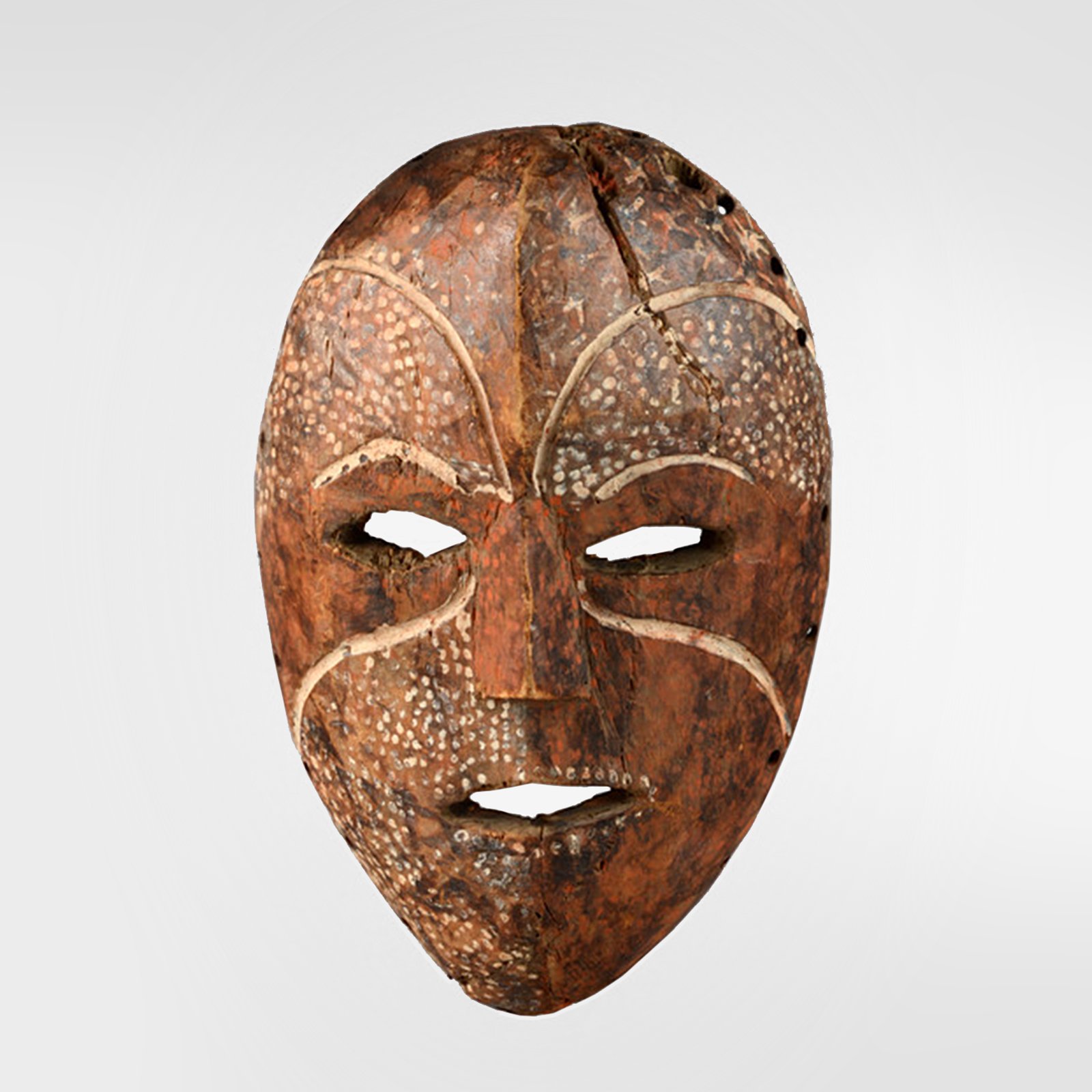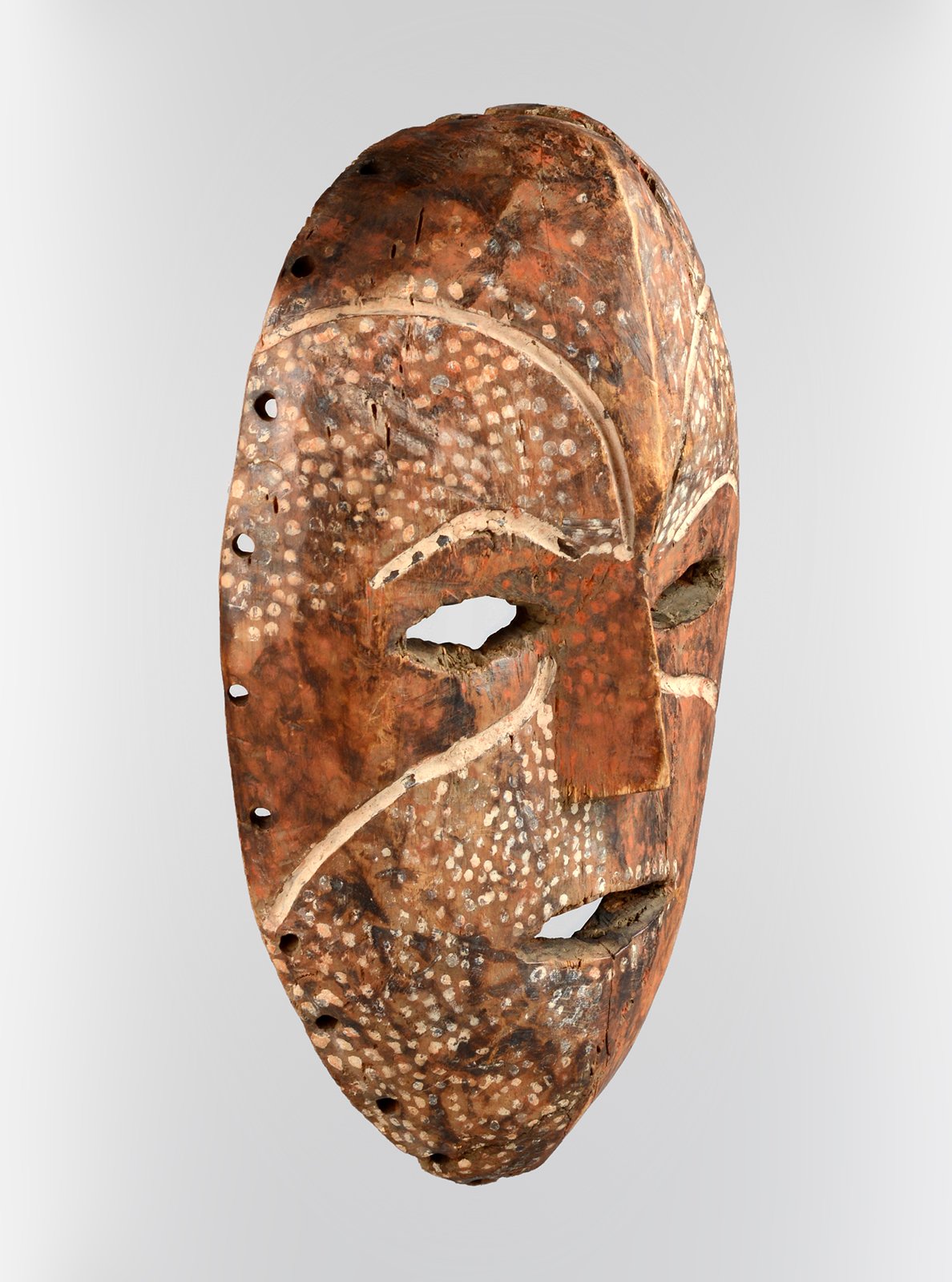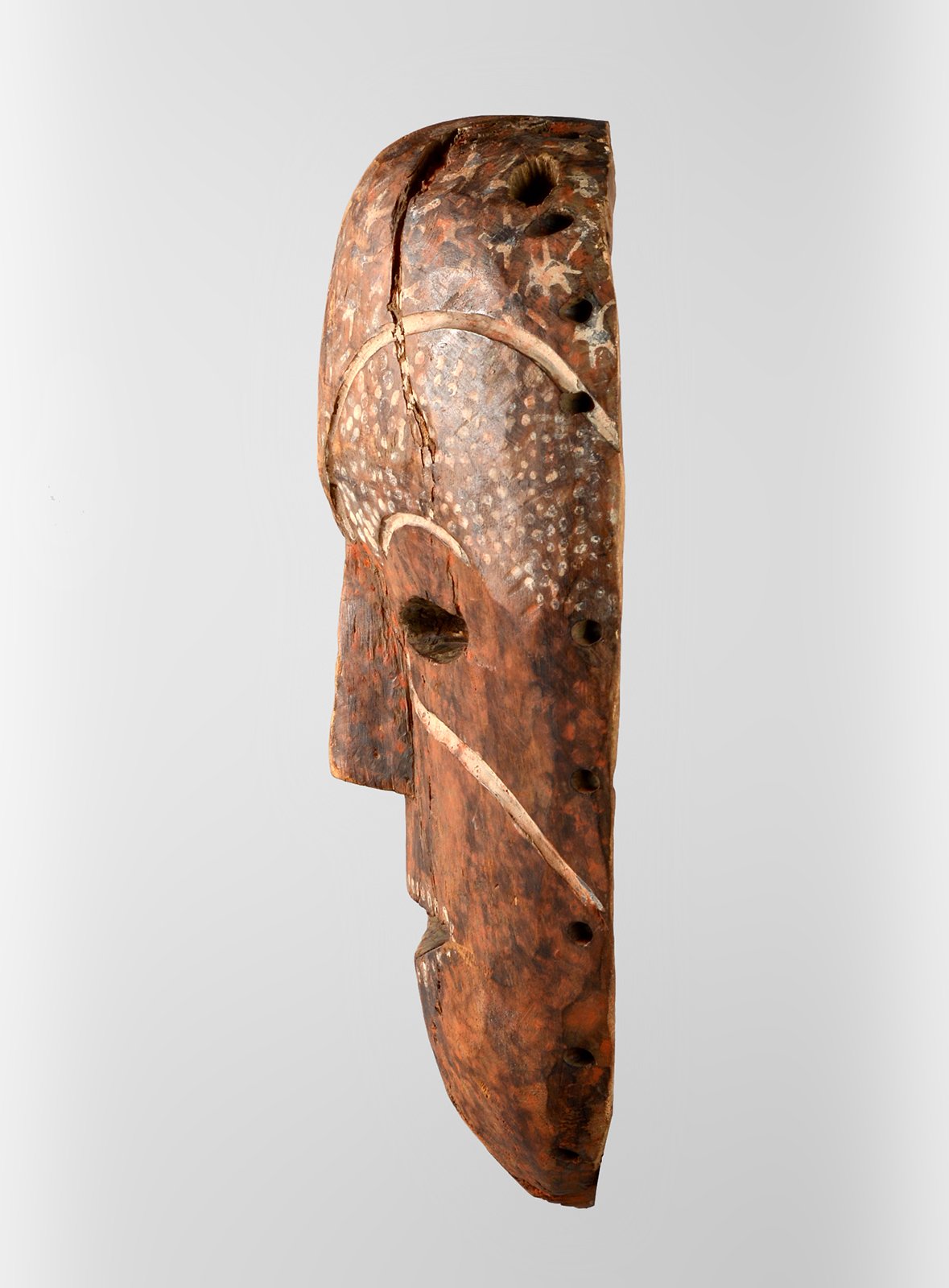 Image 1 of 4
Image 1 of 4

 Image 2 of 4
Image 2 of 4

 Image 3 of 4
Image 3 of 4

 Image 4 of 4
Image 4 of 4





Ituri River mask
Ituri pygmies
Democratic Republic of Congo
Ca. 1930
H. 28 cm
Masks of the Ituri River basin have been brought to the forefront only recently and almost exclusively by the work of Marc Felix. These masks, made by groups occupying the land among the Ituri pygmies, utilize painted design elements on their surfaces that have long been associated with the better known painted bark-cloth textiles of the pygmies. Masks from this region, indeed this example too, often depict the human face as belligerent or leering. Additionally the masks are polychromed and may be bisected or quartered, with oppositional patterning. However, in some cases a single pattern is repeated over the entire surface. Masks like this were also traditionally lined with raffia, and the perforations lining the peripheries of this example were likely used for this. In addition, the painted designs of such masks have long been associated with the painted bark-cloth textiles of the Ituri pygmies. Utilized in a context of boy’s initiation, this powerful mask is at once attractive and aggressive.
Ituri pygmies
Democratic Republic of Congo
Ca. 1930
H. 28 cm
Masks of the Ituri River basin have been brought to the forefront only recently and almost exclusively by the work of Marc Felix. These masks, made by groups occupying the land among the Ituri pygmies, utilize painted design elements on their surfaces that have long been associated with the better known painted bark-cloth textiles of the pygmies. Masks from this region, indeed this example too, often depict the human face as belligerent or leering. Additionally the masks are polychromed and may be bisected or quartered, with oppositional patterning. However, in some cases a single pattern is repeated over the entire surface. Masks like this were also traditionally lined with raffia, and the perforations lining the peripheries of this example were likely used for this. In addition, the painted designs of such masks have long been associated with the painted bark-cloth textiles of the Ituri pygmies. Utilized in a context of boy’s initiation, this powerful mask is at once attractive and aggressive.
